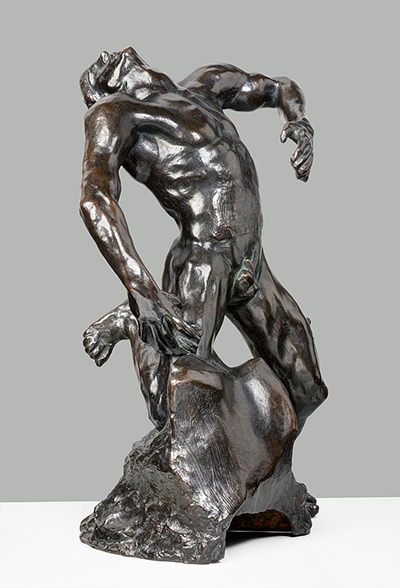Modelled in 1882, The Falling Man is a sculpture created by French artist Auguste Rodin. The piece is part of The Gates of Hell symbolic sculpture group—representing Dante's Inferno. The creation displays the collective human power, as it meets the endless void of Hell.
The Falling Man appears at three separate places in The Gates of Hell model. In one version, the ill-fated figure is seen with its arms lofted, holding the base of the doorway to The Gates of Hell, in a desperate attempt to elude the inferno underneath. The body position—arched backwards, arms flailing with his head facing skywards—emphasizes the utter pain being inflicted. The Falling Man was sculpted in bronze. The medium grew with popularity from the early 19th century. Rodin used to make sketches of his models in clay, which would eventually be tweaked to his liking and cast in bronze.
He would recruit exceptionally skilled practitioners to do the job of re-sculpting his work into a larger size, and then casting it into bronze. Due to the potentially rapid deterioration of clay, plaster casts would often be used in the hope of securing the content. Other sculptors at the time would use similar methods as Rodin. When creating The Falling Man, Rodin used a flowing, flexible movement to create the dramatic curve in the figure's back. The theme of vulnerability—seen habitually in Rodin's work—was evident in The Falling Man. We see an immensely powerful man, whose physique would be considered imposing as a human specimen; seized in absolute pain and distress. The French artist was well-known for providing the observer with genuine torment.
A clear illustration of this was his sculpture Large Right Clenched Hand. Rodin saw hands as pictures of emotion, almost equal to that of the human face. Rodin's work had multi-layered meaning, which engraved stories in the heads of spectators. Fugitive Love, which addresses prohibited sexual encounters; deals with loss and pain, and the troubles of letting go of someone, even in a forbidden relationship. Auguste Rodin often referred to Michelangelo as inspiration behind his work. He himself had significant influence on sculpture movement in the 20th century.




